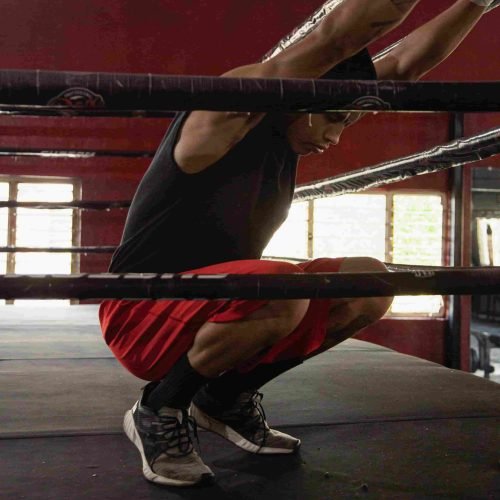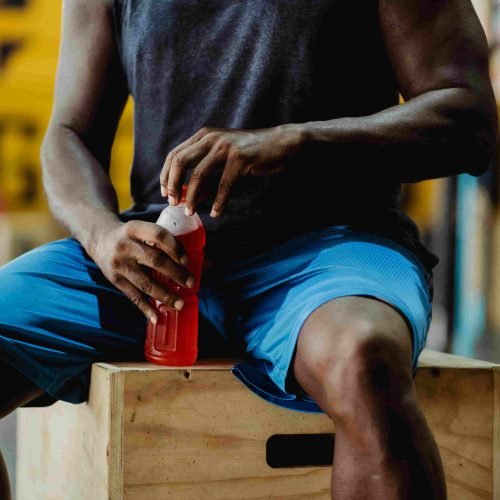Which Muscles Should Be Sore After Boxing?
Understanding which muscles are commonly sore after training is essential for the best recovery for boxing. Boxing is a full-body workout that engages several major muscle groups, each playing a crucial role. The shoulders and arms bear much of the impact, as they are responsible for driving powerful punches. Your core also works hard, stabilizing each movement and helping you generate power, while your legs give you the footwork and balance essential for every round.
Normal soreness is to be expected, especially after intense training. However, it’s vital to recognize the difference between typical soreness and potential injury. Here’s a quick guide to help identify common soreness and signs of strain:
- Normal soreness: Tightness or tenderness in shoulders, arms, and core, generally improving with rest.
- Signs of injury: Sharp, lingering pain or discomfort that worsens over time, indicating the need for medical attention.
The level of soreness you feel will vary based on your workout intensity and skill level. Beginners may experience more extensive muscle soreness as they adapt to the sport, while seasoned boxers might feel less due to conditioning. Regardless, understanding which muscles should be sore—and why—is a key part of the best recovery for boxing.

How Many Rest Days Should a Boxer Take for the Best Recovery for Boxing?
Deciding on the right number of rest days is crucial for the best recovery for boxing. The ideal amount depends largely on your experience level, as beginners, amateurs, and pros each have different needs. Generally, beginners benefit from taking two to three rest days each week, allowing ample time for muscle repair and mental reset. Amateurs might reduce this to one or two days, while professional boxers often limit rest to one day, relying on conditioning and experience to keep up their stamina.
Rest days offer more than just a physical break; they give muscles a chance to rebuild and grow stronger, reducing the risk of injury. They also play an essential role in maintaining mental focus, helping boxers avoid burnout and stay motivated.
When planning your rest days, you can choose between complete rest or active recovery activities that keep your body moving without straining your muscles. Here are some options for active recovery:
- Light cardio, like walking or cycling, to improve circulation.
- Stretching to enhance flexibility and relieve muscle tension.
- Yoga or mobility exercises to keep joints healthy and improve balance.
Including rest days, whether full or active, is a key strategy for the best recovery for boxing, allowing you to train harder and recover smarter.
How Long Do Boxers Take to Heal? Insights for the Best Recovery for Boxing
Recovery times vary among boxers, making it crucial to know how long it typically takes to heal. For the best recovery for boxing, understanding standard timelines for soreness or minor injuries is key. General muscle soreness usually lasts 24 to 72 hours, depending on workout intensity. Minor bruises or strains may require several days to a few weeks to heal, depending on severity.
Several factors impact recovery speed. Age often plays a role, with younger boxers healing faster than older athletes. Training frequency is another factor; those with intense daily routines may need more time to recover. Lastly, overall health, including diet and sleep, directly affects recovery, emphasizing the need for a balanced lifestyle.
Listening to your body helps prevent overtraining, which can slow healing and increase injury risk. Keep an eye on:
- Persistent soreness beyond typical recovery times.
- Low energy, which may signal the need for rest.
- Recurring discomfort, which could indicate strain.
By tuning into these signals, you can achieve the best recovery for boxing and keep your body ready for the next round.

Best Muscle Recovery for Boxers: Strategies for a Speedy and Effective Rebound
Achieving the best recovery for boxing involves more than just rest; it requires targeted muscle recovery techniques to speed up healing and boost performance. Several methods can help reduce soreness and support muscle repair. Techniques like massage, foam rolling, and ice baths work wonders in relieving tension and minimizing inflammation, making them essential parts of any boxer’s recovery plan.
Nutrition and hydration play equally important roles in recovery. Staying well-hydrated keeps muscles functioning efficiently, while a balanced diet rich in protein, vitamins, and minerals fuels tissue repair. For an added boost, natural supplements like turmeric or omega-3s can help ease soreness and reduce inflammation.
Incorporating these techniques into your post-training routine is straightforward:
- Massage: Loosens tight muscles, enhancing blood flow for quicker recovery.
- Foam rolling: Reduces muscle knots and aids in flexibility.
- Ice baths: Minimizes inflammation, helping muscles heal faster.
Using these strategies consistently will ensure the best recovery for boxing, helping boxers stay in peak condition and ready to take on their next session.

